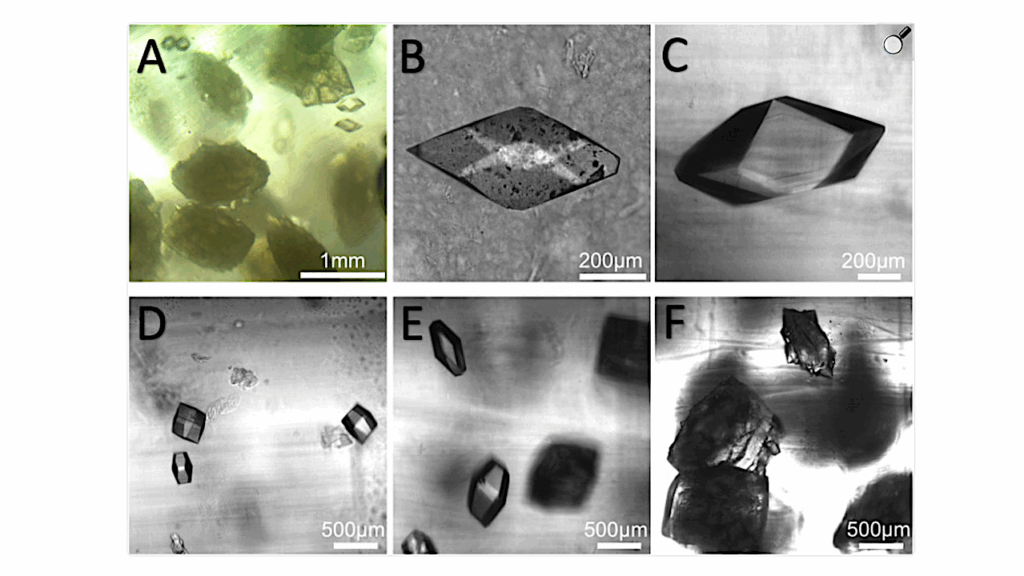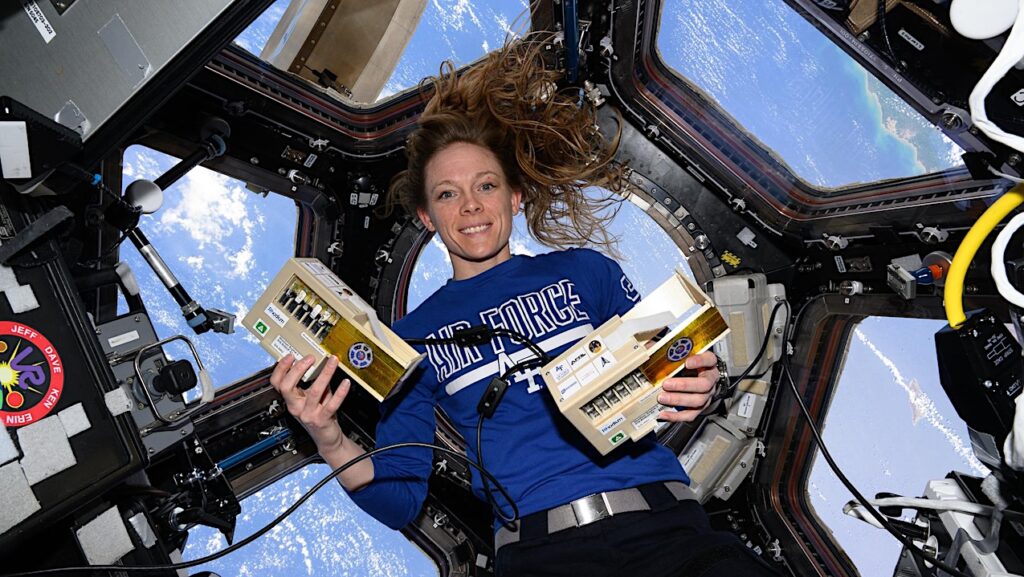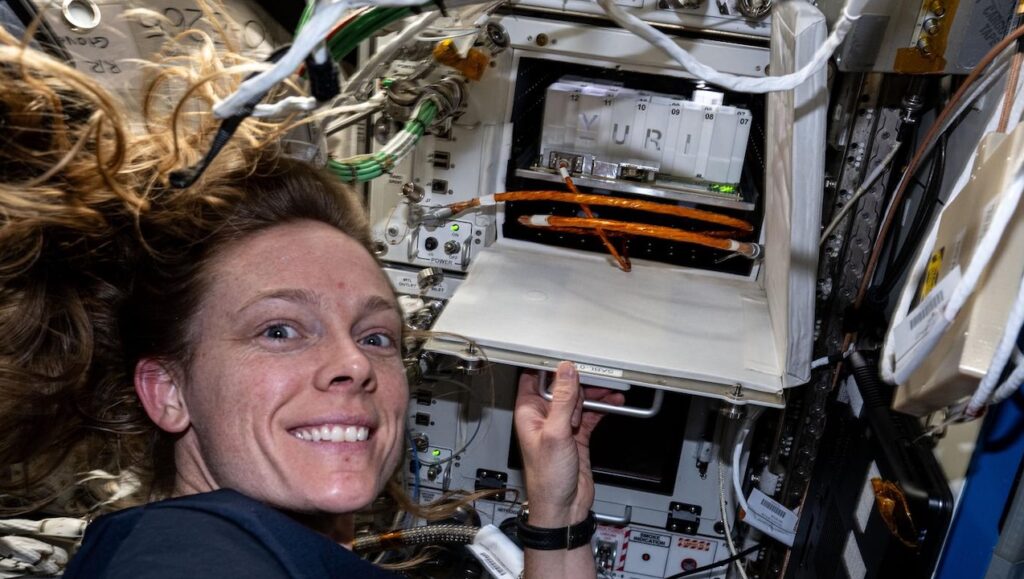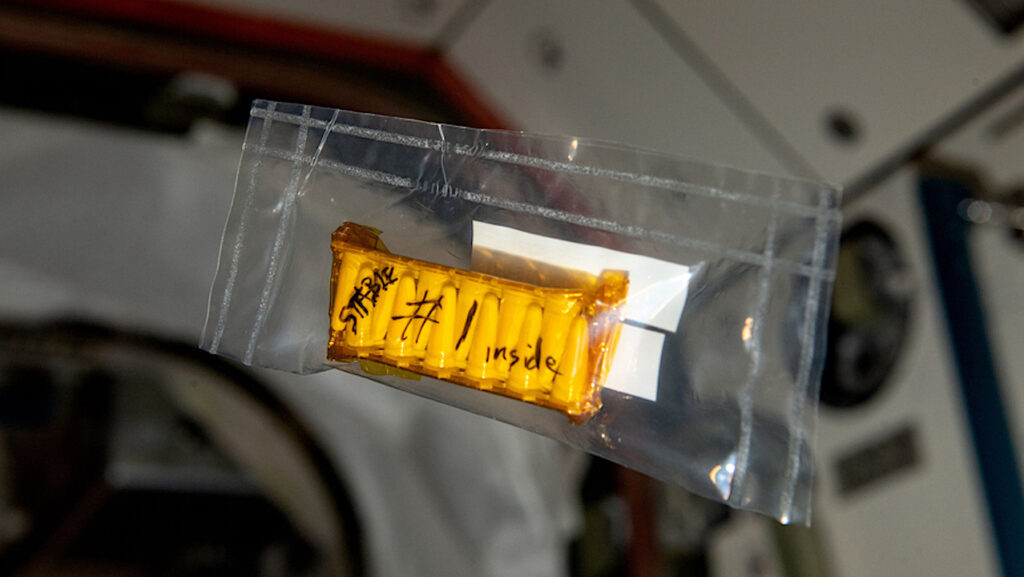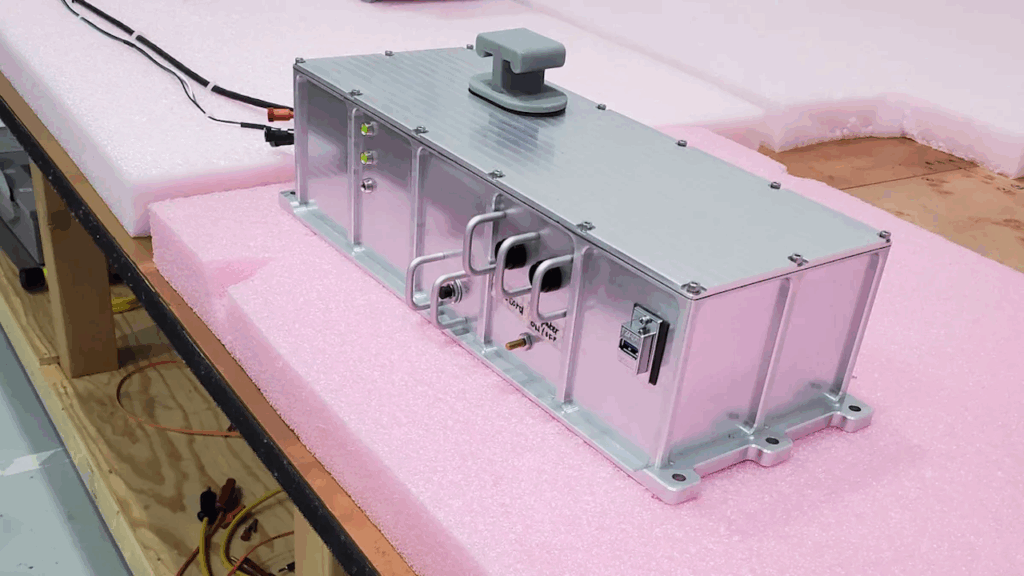NASA Spaceline Current Awareness List #1,136 14 February 2025 (Space Life Science Research Results)
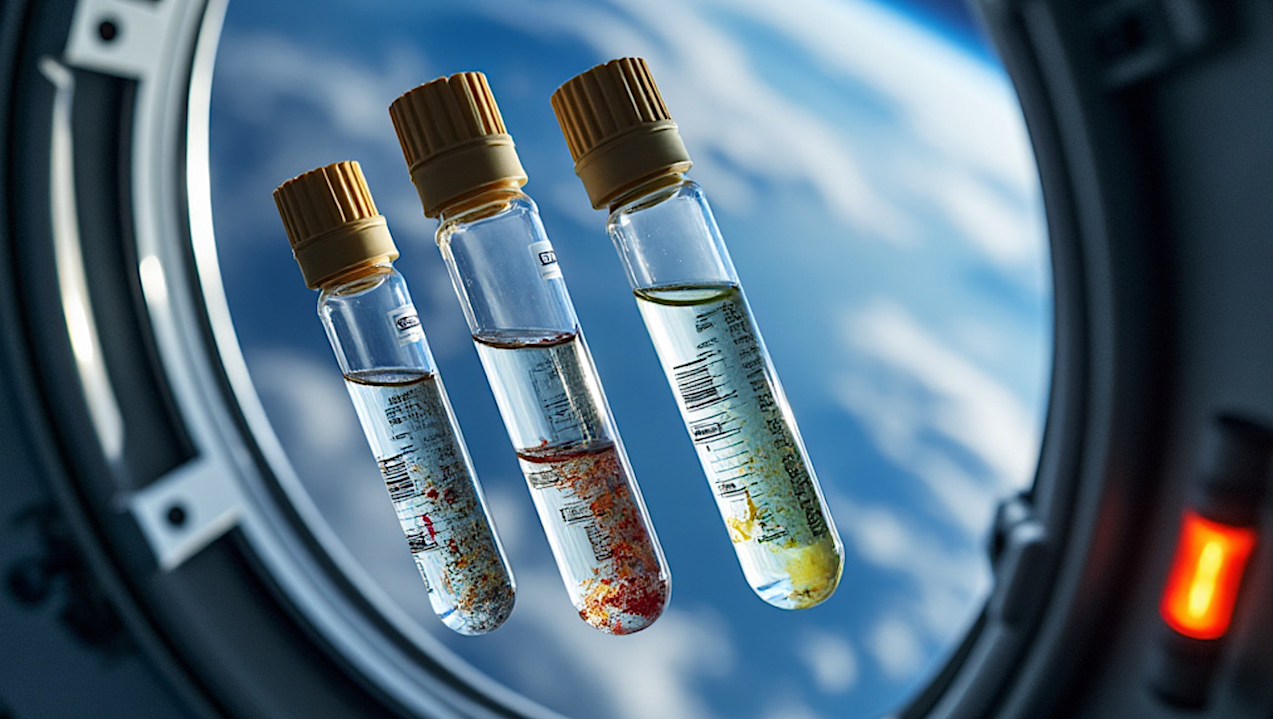
The abstract in PubMed or at the publisher’s site is linked when available and will open in a new window.
Papers deriving from NASA support:
- Shelhamer M.Preparing for the unpredictable: Facilitating multisystem resilience in human spaceflight.In: Schmidt MA, Legato MJ, eds. Building a Space-Faring Civilization. Academic Press, 2025. p. 195-203.PI: M. ShelhamerFunding: PI reports NASA grant #80NSSC19K0487 funding.
- Wang JL, Rosenbaum JJ, Prasad AN, Raad RR, Putman EJ, Harrington AD, Aintablian H, Hynek BM.Potential health impacts, treatments, and countermeasures of Martian dust on future human space exploration.Geohealth. 2025 Feb 12;9(2):e2024GH001213.Note: This article may be obtained online without charge.
Journal Impact Factor: 4.4
Funding: A.D. Harrington is affiliated with NASA Johnson Space Center. - Slaba TC, Rahmanian S, George S, Laramore D, Norbury JW, Werneth CM, Zeitlin C.Validated space radiation exposure predictions from Earth to Mars during Artemis-I.npj Microgravity. 2025 Feb 11;11:6.Note: This article may be obtained online without charge.
Journal Impact Factor: 5.1
Funding: “This work was funded by the Mars Campaign Office RadWorks activity under the Exploration Systems Development Mission Directorate at NASA (T.C.S., C.M.W., J.W.N.), by NASA contract 80LARC23DA003 (S.R.), and by NASA contract NNJ15HK11B (D.L., C.Z.).” - Chiaberge M, Thottappillil N, Liphardt A-M, Furlanetto A, Odell D, Wang C, Hope S, Smee S, Rehfus J, Niehoff A, Shelhamer M, Norman C, Philippon MJ, Huard J, James AW, Fan C-M.Plyometric training increases thickness and volume of knee articular cartilage in mice.npj Microgravity. 2025 Feb 13;11:5.PI: M. ShelhamerNote: This article may be obtained online without charge.
Journal Impact Factor: 5.1
Funding: PI reports CIPHER (Complement of Integrated Protocols for Human Research) funding.” - Musci J, Schaler RA, Hummerick M, Pryor B, Smith T, Haveman N.Cultivating sporeless Pleurotus ostreatus (pearl oyster) mushrooms on alternative space-based substrates under elevated carbon dioxide.Gravit Space Res. 2025 Jan 23;13(1):1-20.Note: This article may be obtained online without charge.
Journal Impact Factor: 2.0
Funding: “This work was supported by the National Aeronautics and Space Administration (NASA) Biological and Physical Sciences (BPS) program, as well as the Office of STEM Engagement (OSTEM) Intern Program and NASA Centennial Challenge’s Deep Space Food Challenge.” - Wang M, Ye C, Yang Y, Mukasa D, Wang C, Xu C, Min J, Solomon SA, Tu J, Shen G, Tang S, Hsiai TK, Li Z, McCune JS, Gao W.Printable molecule-selective core-shell nanoparticles for wearable and implantable sensing.Nat Mater. 2025 Feb 3.Note: From the abstract: “Wearable and implantable biosensors are pioneering new frontiers in precision medicine by enabling continuous biomolecule analysis for fundamental investigation and personalized health monitoring. However, their widespread adoption remains impeded by challenges such as the limited number of detectable targets, operational instability and production scalability. Here, to address these issues, we introduce printable core–shell nanoparticles with built-in dual functionality: a molecularly imprinted polymer shell for customizable target recognition, and a nickel hexacyanoferrate core for stable electrochemical transduction.” This article may be obtained online without charge.
Journal Impact Factor: 37.2
Funding: “This project was supported by National Science Foundation grant 2145802, National Institutes of Health grants R01HL155815, R21DK13266, U01CA239373 and R01GM129863, American Cancer Society Research Scholar Grant RSG-21-181-01-CTPS, Office of Naval Research grants N00014-21-1-2483 and N00014-21-1-2845, Army Research Office grant W911NF-23-1-0041, NASA Cooperative Agreement 80NSSC20M0167, Heritage Medical Research Institute, and Caltech-City of Hope Biomedical Initiative Pilot Grant.”
Other papers of interest:
Guo X, Zhou Y, Li X, Mu J.Resistance exercise training improves disuse-induced skeletal muscle atrophy in humans: A meta-analysis of randomized controlled trials.BMC Musculoskelet Disord. 2025 Feb 7;26:134.Note: This article may be obtained online without charge.
Astrobiology, space biology, space life science, microgravity,
Dormán G, Buchholcz B, Puskás I, Szabó P, Varga E, Szente L, Keserű GM, Darvas F.Repetitive stability study of remdesivir/cyclodextrin complex on the International Space Station.Sci Rep. 2025 Feb 4;15:4182.Note: From the abstract: “Stability assessment of drugs in space is particularly important for future missions. In space, there are multiple factors, such as the variability of the conditions (radiation, microgravity, vacuum etc.) that could affect the reliability and reproducibility of the data. Therefore, we investigated the stability of an anti-Covid drug formulation, Remdesivir (RDV) sulfobutylether-beta-cyclodextrin (SBECD) complex, in two separate flight experiments on the International Space Station (ISS).” This article may be obtained online without charge.
Ax T, Zimmermann PH, Bothe TL, Barchetti K, de Paiva CS, March de Ribot F, Jensen SO, Millar TJ.On the nose: Nasal neurostimulation as a technology countermeasure for sinonasal congestion in astronauts.Front Physiol. 2025 Feb 13;16:1536496.Note: This is an opinion article and may be obtained online without charge.
Dunn C, Maheshwari K.Dermatology in space.In: Krittanawong C, ed. Precision Medicine for Long and Safe Permanence of Humans in Space. Academic Press, 2025. p. 273-91.
Fernandez-Gonzalo R, Schneider S, Heer M, Liphardt AM.The search for the ultimate exercise countermeasure to preserve crew health and ensure mission success in long-duration spaceflight.Exp Physiol. 2025 Feb 7. Review. Online ahead of print.Note: This article may be obtained online without charge.
Impey C.Human enhancement and our future off-Earth.In: Clark P, ed. Global Bioethics – Current Challenges, New Developments, and Future Directions. Rijeka. IntechOpen, 2025 Jan 21.
Liu T, Trudel G.Space anemia.In: Krittanawong C, ed. Precision Medicine for Long and Safe Permanence of Humans in Space. Academic Press, 2025. p. 229-37.
Rahmah L, Sukadiono S, Mundakir M, Hassanzadeh G, Keramati MR, Shariat A.A review of telesurgery in extreme settings: A narrative review.Telemedicine and e-Health. 2025 Feb 7. Review. Online ahead of print.
Shafer S, Schaffer D, Anderson G, Antonsen E.Medical toxicology considerations for space exploration.Wilderness Environ Med. 2025 Feb 6;10806032251313960. Online ahead of print.Note: From the abstract: “Spaceflight poses many risks to human health. Toxic exposures from inadvertent release of vehicle or payload chemicals and materials used in the operations of spaceflight are unique among them. There is a need for identification and development of clinical protocols for the management of toxic exposures before, during, and after spaceflight, particularly for acute exposures, because these events are likely to occur in austere environments with limited resources.”
Shi K, Yang H, Zhang W, Chen W, Yan A, Peng J.Research on a new multifunctional cell sample automatic culture device for use in the Chinese Space Station.Aerospace. 2025 Jan 26;12(2):90.Note: This article is part is Special Issue “Space Sampling and Exploration Robotics” (https://www.mdpi.com/journal/aerospace/special_issues/HDJI15H9B) and may be obtained online without charge.
Smith MB, Chou J, Xenaki D, Bai X, Chen H, Oliver BGG.Lunar dust induces minimal pulmonary toxicity compared to Earth dust.Life Sci Space Res. 2025 May;45:72-80.Note: From the abstract: “Humans are returning to the Moon and understanding the toxicity of lunar dust is crucial for successful missions. Apollo mission reports suggest that lunar dust poses significant inhalation risks. Previous studies on lunar dust simulants have shown tissue and cellular damage in the lungs. This study focuses on two new simulants, LMS-1 and LHS-1, which closely replicate the lunar dust of the mare and highland regions of the Moon.”
Vittori R.The human experience of conducting engineering and construction operations in space.In: Schmidt MA, Legato MJ, eds. Building a Space-Faring Civilization. Academic Press, 2025. p. 95-8.
Yang F, Yan Q, Wang Y, Li Q, Wang J, Zeng X, Pi Y, Zhang M, Wei L.AMP1-1 alleviates bone loss in weightless rats by reducing peripheral 5-HT content via the microbiota-gut-bone axis.Phytomedicine. 2025 Jan 28;139:156447.
Battistelli A, Proietti S, Paglialunga G, Mattioni M, Nazzaro F, Fratianni F, Colla G, Cardarelli M, Del Bianco M, Moscatello S.Establishing baselines for prebiotic production in controlled environments for applications in space and vertical farming.Heliyon. 2025 Jan 30;11(2):e42112.Note: This article may be obtained online without charge.
Ikeya K, Guerrero-Gonzalez FJ, Kiewiet L, Cardin M-A, Cilliers J, Starr S, Hadler K.Hybrid lunar ISRU plant: A comparative analysis with carbothermal reduction and water extraction.Acta Astronaut. 2025 Feb 12. Online ahead of print.Note: From the abstract: “To establish a self-sustained human presence in space and to explore deeper into the solar system, extensive research has been conducted on In-Situ Resource Utilization (ISRU) systems. Past studies have proposed and researched many technologies to produce oxygen from regolith, such as carbothermal reduction and water extraction from icy regolith, to utilize it for astronauts’ life support and as the propellant of space systems. However, determining the most promising technology remains challenging due to uncertainties in the lunar environment and processing methods. To better understand the lunar environment and ISRU operations, it is crucial to gather more information. Motivated by this need for information gathering, this paper proposes a new ISRU plant architecture integrating carbothermal reduction of dry regolith and water extraction from icy regolith.”
Kim JM, Minh TH, Jeon EJ, Park JM, Kim S, Choi JS.Effect of short-term gravitational changes on the human minor salivary gland stem cell characteristics.J Oral Biosci. 2025 Feb 4;100625. Online ahead of print.
Liu M, Wang Y, Ren F, Zhang W, Zheng H, Zhang R, Gao C, Luo L, Nie C, Gu J.Simulated microgravity activates autophagy expression in the rat retina.Life Sci Space Res. 2025 Feb 11. Online ahead of print.Note: Hindlimb unloading study.
Shi Q, Song Y, Cao J, Na J, Yang Z, Chen X, Wang Z, Fan Y, Zheng L.Inhibition of mitochondrial fission reverses simulated microgravity-induced osteoblast dysfunction by enhancing mechanotransduction and epigenetic modification.Research (Wash D C). 2025 Feb 4;8:0602.Note: A 2D clinostat was used in this study. This article may be obtained online without charge.


